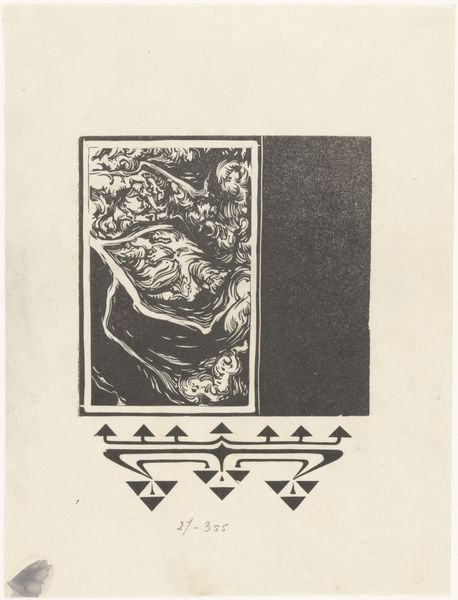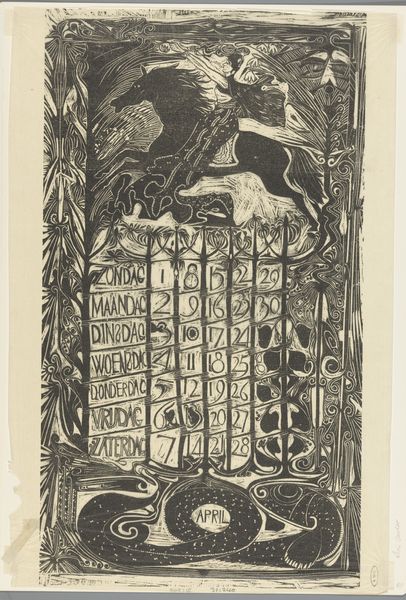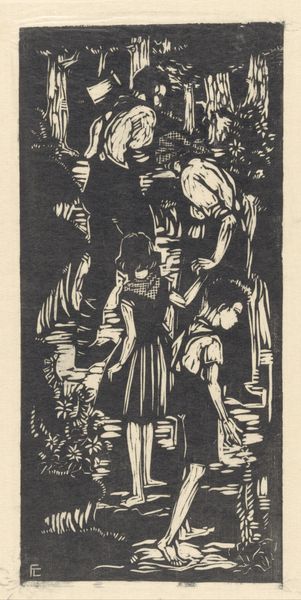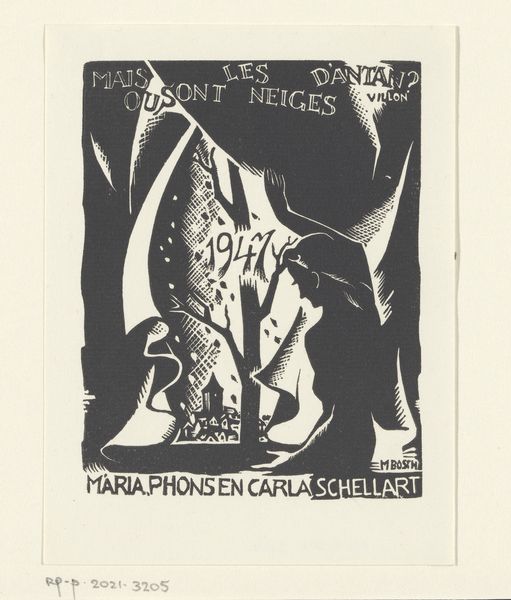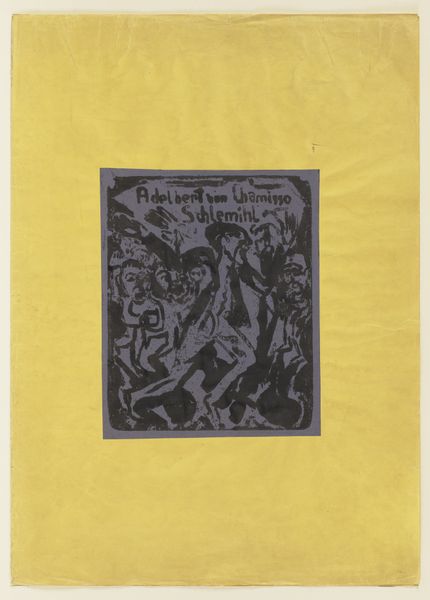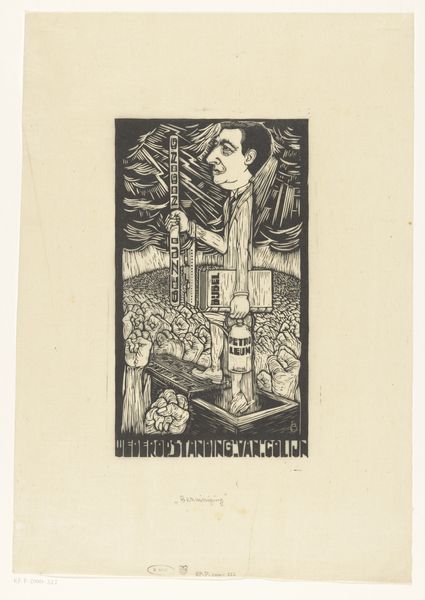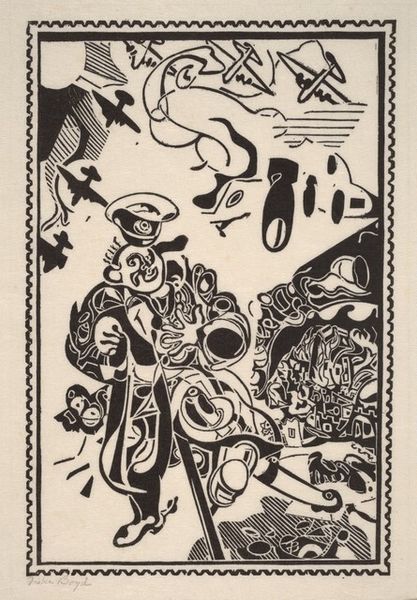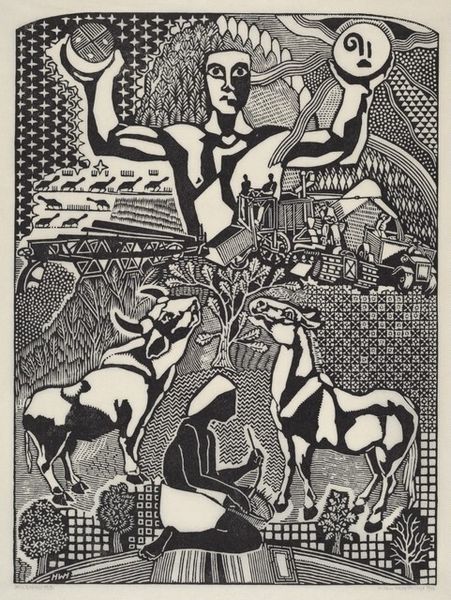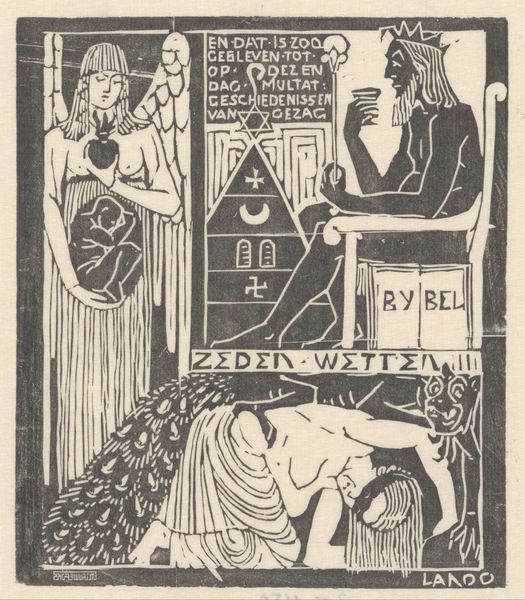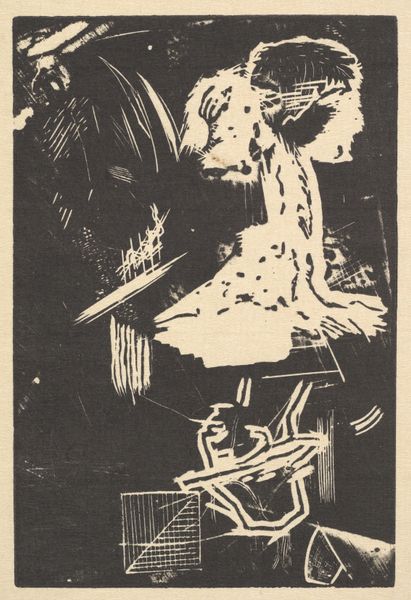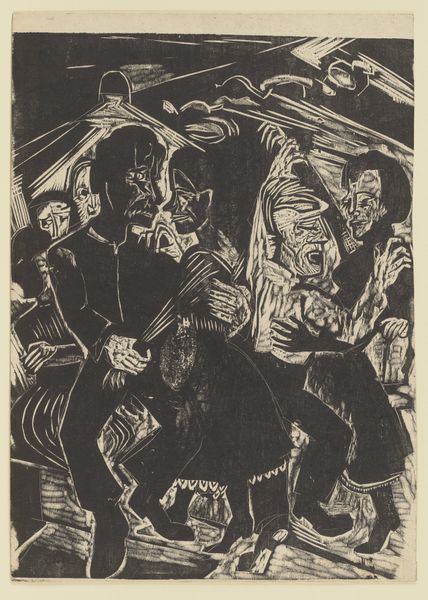
drawing, graphic-art, print, linocut
#
drawing
#
graphic-art
#
art-nouveau
#
narrative-art
# print
#
linocut
#
caricature
#
linocut print
Dimensions: Sheet: 5 1/2 × 3 9/16 in. (14 × 9 cm)
Copyright: Public Domain
Moriz Jung created "Hygienic Ballad" as a color linocut, sometime around the turn of the century, in Austria. The cartoonish imagery suggests a narrative, but the story is not immediately clear without understanding the social context of its creation. Turn-of-the-century Vienna was a city grappling with rapid industrialization, overcrowded living conditions, and a growing awareness of public health. The print's title, "Hygienic Ballad," hints at the social reform movements that sought to improve sanitation and hygiene in urban environments. The figures, rendered in a grotesque style, may represent disease or the unhealthy habits of the time. The Latin word "Salubritas" appearing on some sort of round object might have been used to symbolize cleanliness. To fully understand Jung's intentions, a historian might look to public health campaigns, medical literature, and social commentaries of the era, alongside biographical details of Jung himself. The meaning of art is always contingent on social and institutional context, and historical research is crucial for unlocking its secrets.
Comments
No comments
Be the first to comment and join the conversation on the ultimate creative platform.
